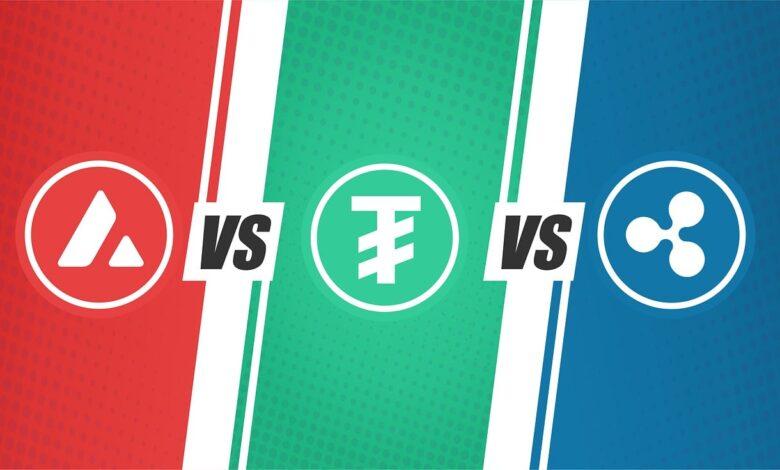Staking vs. Mining – Which Pays More?

In the rapidly evolving realm of cryptocurrency, investors are often faced with a fundamental question: which approach yields better returns? The two prominent strategies that capture the imagination of enthusiasts and seasoned traders alike are staking and mining. Each method offers its own unique advantages and challenges, raising the question of profitability and long-term viability. As we embark on this comparison, it becomes crucial to dissect the intricacies of both strategies to understand not only their operational mechanics but also their potential for lucrative returns.
Mining, a process rooted in computational power, involves solving complex mathematical puzzles to validate transactions on a blockchain network. This traditional method has been synonymous with cryptocurrency since its inception, primarily associated with Bitcoin. However, it is not without its drawbacks–rising energy costs and increasing difficulty levels present significant barriers to entry. In contrast, staking represents a more modern approach where investors lock up their assets to support network operations in exchange for rewards. This method is often lauded for its energy efficiency and accessibility, yet it raises questions about security and market volatility.
As we delve deeper into the nuances of these two investment strategies, it becomes imperative to consider factors such as initial investment requirements, potential returns, and the inherent risks associated with each approach. Is staking or mining more profitable in today’s dynamic market? Which strategy aligns better with an investor’s risk profile and financial goals? By comparing these methodologies through an analytical lens, we aim to provide clarity in a landscape often clouded by hype and speculation.
Ultimately, whether one chooses to stake or mine may hinge on individual circumstances and preferences. Our exploration will illuminate the paths available within the crypto ecosystem, enabling you to make informed decisions about your investment strategy. Let us embark on this analytical journey together and uncover which of these crypto approaches truly pays off in the quest for financial growth.
Staking vs. Mining: A Comprehensive Analysis
In the ever-evolving landscape of cryptocurrency investments, two prominent strategies have emerged: staking and mining. Both methods offer distinct approaches to earning returns, yet they operate on fundamentally different principles. Staking involves locking up a certain amount of cryptocurrency in a wallet to support the network’s operations, thereby earning rewards over time. On the other hand, mining is the process of validating transactions and securing the blockchain by solving complex mathematical problems. This comparison of staking vs. mining reveals critical differences that potential investors should understand for making informed decisions.
When delving into profitability, it is essential to examine how each method yields returns. Mining can often seem more lucrative due to the substantial rewards available from block validation; however, it comes with significant upfront costs, including hardware purchases and electricity expenses. The profitability of mining also fluctuates with market conditions and network difficulty. Conversely, staking typically requires less initial investment and lower ongoing costs, making it an attractive option for those seeking a more passive approach to crypto investment. Thus, while mining may promise high returns in certain scenarios, its profitability can be far less stable compared to staking.
In terms of risk management, staking offers a layer of predictability absent in mining. Investors who engage in staking can anticipate regular rewards based on the amount staked and the network’s reward distribution schedule. This consistent yield stands in stark contrast to mining, where returns are subject to variables like competition among miners and market volatility. As such, individuals looking for a more stable investment strategy may find staking to be a more prudent choice in the long run.
Furthermore, the environmental impact of these strategies cannot be overlooked when comparing their viability as investment methods. Mining has faced significant scrutiny due to its energy-intensive nature, particularly with proof-of-work blockchains that require vast computational power. In response to these concerns, many cryptocurrencies have transitioned towards proof-of-stake mechanisms that prioritize efficiency and lower carbon footprints. This shift not only highlights the evolving nature of cryptocurrency but also positions staking as a more sustainable investment strategy compared to mining.
When considering which cryptocurrency strategy yields better returns, it is vital to assess individual goals and capabilities. For tech-savvy investors willing to invest in necessary hardware and navigate the complexities of mining pools, mining can potentially offer high rewards. However, those who prefer a simpler approach with lower risks might favor staking as their preferred method of engagement in the crypto space. Ultimately, both strategies possess unique advantages and drawbacks that cater to different investor profiles.
In conclusion, while staking vs. mining presents a rich tapestry of options within the cryptocurrency realm, discerning which approach is more profitable largely depends on an investor’s personal circumstances and preferences. By evaluating key factors such as costs, risks, and sustainability, individuals can make educated choices tailored to their financial objectives. As the crypto market continues to mature, understanding these diverse strategies will enable investors to adapt effectively to an ever-changing environment and optimize their returns accordingly.
Understanding Crypto Staking Benefits: Staking vs. Mining
In the ever-evolving landscape of cryptocurrency investments, two prominent strategies have emerged as the focal points of discussion: staking and mining. Both methods offer unique approaches to generating returns, yet they operate on fundamentally different principles. This comparison invites investors to explore which method is more profitable in the long run, allowing them to make informed decisions about their crypto portfolios.
Staking involves locking up a certain amount of cryptocurrency to support the operations of a blockchain network, primarily those that utilize a proof-of-stake (PoS) consensus mechanism. In return for this commitment, stakers earn rewards in the form of additional tokens. This strategy is often deemed more user-friendly compared to mining, as it typically requires less technical expertise and does not involve significant energy consumption. The potential yields from staking can be attractive; depending on the specific cryptocurrency and network conditions, annual returns can range from modest percentages to double digits.
On the other hand, mining traditionally revolves around proof-of-work (PoW) systems where miners solve complex mathematical problems to validate transactions and secure the blockchain. This approach demands substantial computational power and energy resources, leading to higher operational costs. While mining can yield significant rewards in terms of newly minted coins, these returns are heavily influenced by factors such as market volatility, competition among miners, and hardware efficiency. Thus, while mining may seem lucrative at first glance, its profitability can fluctuate dramatically based on external conditions.
When comparing staking vs. mining, it becomes crucial to consider not only potential returns but also the inherent risks associated with each method. Staking can be viewed as less risky due to its passive nature; investors can earn rewards without the constant need to upgrade hardware or manage electricity costs. Conversely, mining carries greater risk exposure as market dynamics can lead to diminishing returns if operational costs exceed income generated from mined coins.
Additionally, liquidity plays a significant role in determining which investment method may yield better results. Staked assets are often locked for a specified period, limiting immediate access to funds during market downturns. In contrast, mined cryptocurrencies can be sold or traded at any time, offering more flexibility in responding to market conditions. Investors must weigh these factors when deciding which approach aligns with their financial goals and risk tolerance.
Ultimately, both staking and mining present viable strategies for generating returns within the cryptocurrency ecosystem. The decision rests on individual preferences regarding risk appetite, resource allocation, and desired involvement in the crypto space. By understanding the nuances of each method and considering factors such as profitability and liquidity, investors can make educated choices that best suit their investment strategies in this dynamic market.
Pros and Cons of Crypto Mining; Staking vs. Mining: Which Crypto Investment Method is More Profitable?
In the ongoing debate between staking and mining as viable crypto investment strategies, it is essential to analyze the merits and drawbacks of each method. Mining, traditionally viewed as the backbone of cryptocurrencies like Bitcoin, involves using computational power to solve complex algorithms, thereby validating transactions on a blockchain. This process can be lucrative, especially during bullish market trends when the rewards for solving blocks are high. However, it comes with substantial costs, including electricity consumption and hardware maintenance, which can diminish overall returns. In contrast, staking offers a different approach by allowing investors to lock their assets in a wallet to support network operations, earning rewards in return. This method tends to be more energy-efficient and can yield better returns for those who prefer a passive income strategy.
When comparing these two methods, one must consider not only profitability but also accessibility and risk factors. Mining requires significant upfront investment in specialized equipment and continuous operational costs that may not be feasible for all investors. Moreover, the volatility of cryptocurrency prices can make mining a gamble; if prices drop significantly, miners may find themselves operating at a loss. On the other hand, staking often has lower barriers to entry–many cryptocurrencies allow users to stake from standard wallets without needing expensive hardware. This makes staking an attractive option for individuals looking to enter the crypto space with less capital while still seeking potentially lucrative returns.
However, staking is not without its own challenges. The returns from staking can vary widely based on numerous factors, such as network performance and overall market conditions. Additionally, staked coins are typically locked for a specific period, rendering them illiquid during market downturns or emergencies. In this comparison of approaches, it’s crucial to evaluate how each method aligns with personal investment goals and risk tolerance. For example, an investor focused on active engagement may prefer mining despite its costs, while those seeking stability might lean toward staking for its passive nature.
Ultimately, determining which strategy yields better returns hinges on individual circumstances and market dynamics. While mining could offer higher short-term profits during certain periods, the sustainability of those profits is often overshadowed by ongoing expenses and market fluctuations. Conversely, staking provides a more consistent income stream over time but may not match the explosive gains that successful mining ventures can achieve under optimal conditions. Therefore, potential investors must carefully weigh these factors in their decision-making process to identify which cryptocurrency investment strategy best suits their financial objectives and capabilities.
Staking vs. Mining: Which Crypto Investment Strategy Yields Higher Returns?
In the ever-evolving landscape of cryptocurrency, investors are perpetually searching for the most lucrative avenues to channel their resources. Two dominant strategies have emerged: staking and mining. While both methods offer potential returns, they do so through fundamentally different mechanisms. Understanding these differences is crucial for any investor looking to optimize their cryptocurrency portfolio.
Staking, at its core, involves locking up a certain amount of cryptocurrency to support the operations of a blockchain network. In return, participants receive rewards, often in the form of additional tokens. This method not only contributes to network security but also generates passive income, making it an attractive option for those who prefer a more hands-off investment strategy. On the other hand, mining demands significant computational resources and energy consumption, as it relies on solving complex mathematical problems to validate transactions and secure the network. Though potentially rewarding, mining can be costly and requires ongoing technical knowledge and investment in hardware.
Comparison of Staking and Mining
When evaluating which strategy yields better returns, it’s essential to consider several factors:
- Initial Investment: Mining typically requires a substantial upfront investment in hardware and electricity costs, while staking often necessitates simply holding cryptocurrency in a wallet.
- Returns: Staking can provide consistent, predictable returns over time, whereas mining profits can be highly volatile based on market conditions and competition.
- Risk Factors: Both methods carry risks; staking may lead to losses if the value of staked tokens decreases, while mining profitability can fluctuate dramatically with changes in mining difficulty and network hash rates.
- Time Commitment: Staking is generally more passive, requiring less ongoing management compared to the active involvement needed for successful mining operations.
Ultimately, the question remains: which is more profitable? The answer often depends on individual circumstances and personal preferences. For those with a keen interest in technology and sufficient capital for hardware investments, mining might appear as a more engaging approach. Conversely, investors seeking lower entry barriers and greater simplicity might find staking to be the more appealing option.
In conclusion, both staking and mining possess unique advantages and challenges. The most lucrative method is not merely about comparing returns but rather understanding how each strategy aligns with one’s investment goals and risk tolerance. Whether one chooses to stake their assets or dive into the technical world of mining, informed decision-making will ultimately determine the path to achieving profitable outcomes in the vibrant realm of cryptocurrency.





